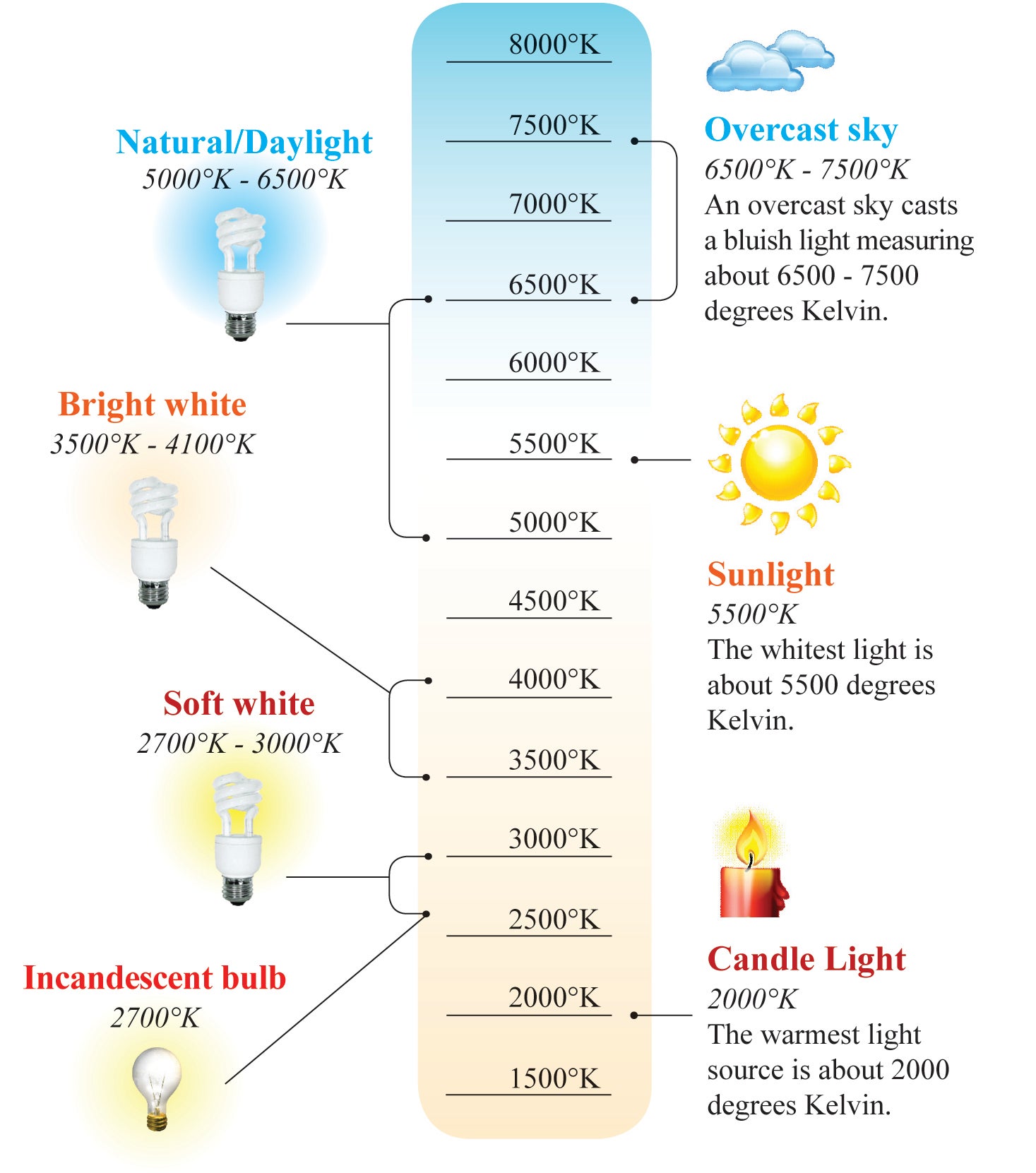How Lighting Color Impacts the Mood of a Room
Energy-efficient bulbs such as compact fluorescent light bulbs (CFLs) and LEDs are available in a variety of shades of light, from warm white to cool white to daylight. The color can make a significant impact on your perception of the bulb and influence the “mood” of your room. When energy-saving bulbs were first introduced, they had a yellowish-colored light similar to incandescent bulbs. Now there are a variety of “cooler” color shades with white or bluish-colored light, so you can customize the mood of your rooms.

Light bulb color temperature chart
The graphic above is a light bulb color temperature chart illustrating the differences between each of the different lighting types. Using this chart, you can more effectively decide what color light bulbs you should use in each room of your home. Each lighting type represented in this chart is notated with its temperature range in Kelvin.
WHAT COLOR LIGHT BULB DO YOU NEED?
Lighting color is measured on a temperature scale referred to as Kelvin (K). A lower Kelvin rating on the spectrum indicates a warm, yellowish light, while a higher Kelvin rating produces a cooler, bluish light. Here, we’ll examine the differences between the types of light color, where each falls on the Kelvin temperature scale, and where each is best utilized within your home.
LIGHT BULB COLOR TYPES
- Soft white (Yellowish light): Bulbs rated at 2700-3000 Kelvin typically produce a more yellowish light, which is best used in bedrooms and living rooms.
- Warm white (Between yellow and white light): Bulbs rated at 3000-4000 Kelvin produce a yellowish, white light that is best used in kitchens, bedrooms, and bathrooms.
- Bright white (Between white and blue light): Bulbs rated at 4000 Kelvin to 5000 Kelvin produce a bluish white light that is best used in kitchens and bathrooms.
- Daylight (Blue light): Bulbs rated at 5000 Kelvin to 65000 Kelvin provide a blue light and are best used in kitchens and offices because of their brightness, intensity and contrast.
COOL LIGHT BULB TEMPERATURES
Light bulbs with a cooler temperature in Kelvin (Daylight, bright white) are usually preferred in places where brightness and contrast are important. As an example, cooler light bulbs are often used in kitchens, where it’s vitally important that you can see what you’re doing. The same principle applies to home offices and workspaces.
WARM LIGHT BULB TEMPERATURES
Light bulbs with a warmer temperature in Kelvin (Soft white, warm white) are usually preferred in living spaces like bedrooms and living rooms that don’t require intense, blue light. In fact, warm lighting can create an atmosphere of comfort and relaxation in living spaces throughout your home. It’s even more flattering on skin tones and clothing.
